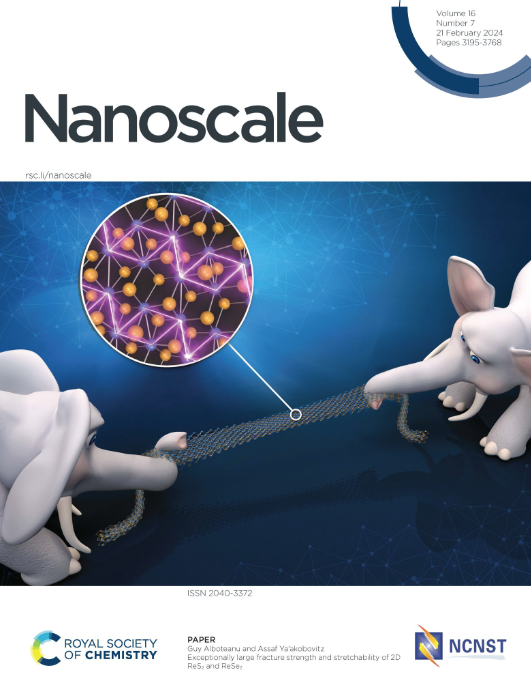Probing the Influence of Morphological Transformation on the Electrochemical Properties of Hydrated Tungsten Oxide (WO3-x.H2O) for High-Rate Aqueous Asymmetric Supercapacitor
IF 5.8
3区 材料科学
Q1 CHEMISTRY, MULTIDISCIPLINARY
引用次数: 0
Abstract
The present study aims to probe morphological tuning of hydrated tungsten oxide (WO3-x·H2O) nanostructures and their electrochemical performance investigation for energy storage in supercapacitors. The WO3-x·H2O nanostructures have prepared via a single-step wet chemical method. Further, the morphological transition of WO3-x·H2O nanostructures from nanosheet-assembled nanoflowers (W1) to nanoribbons (W2) as a result of regulating the reaction time has achieved without disturbing the orthorhombic crystal structure. The morphological transformation from W1 to W2 exhibited decrease in crystallinity and other physical properties significantly affecting electrochemical behavior. Electrochemical investigations emphasized that W1 has higher specific capacitance of 70 F g-1 than W2 of 37 F g-1 at 1 A g-1. Moreover, an Aqueous Asymmetric Supercapacitor (AASC) device fabricated using WO3-x·H2O as the negative electrode. The device exhibited a specific capacitance of 40 F g-1 at 0.5 A g-1 with an energy density of 12.5 W h kg-1 and a power density of 3784 W kg-1. Additionally, it demonstrated excellent cycling stability with 97 % capacitance retention over 5000 cycles. These findings highlight the potential of morphology-controlled WO3-x·H2O nanostructures for advanced energy storage applications.探讨形态变化对高倍率水不对称超级电容器水合氧化钨(WO3-x.H2O)电化学性能的影响
本研究旨在探讨水合氧化钨(WO3-x·H2O)纳米结构的形态调谐及其在超级电容器储能中的电化学性能研究。采用单步湿化学法制备了WO3-x·H2O纳米结构。此外,通过调节反应时间,WO3-x·H2O纳米结构从纳米片组装的纳米花(W1)转变为纳米带(W2),而不影响正交晶型结构。从W1到W2的形态转变显示出结晶度和其他物理性质的降低,显著影响了电化学行为。电化学研究强调W1在1 A g-1下比电容为70 F -1,高于W2的37 F -1。此外,以WO3-x·H2O为负极制备了水不对称超级电容器(AASC)器件。该器件在0.5 a g-1下的比电容为40 F -1,能量密度为12.5 W h kg-1,功率密度为3784 W kg-1。此外,它还表现出优异的循环稳定性,在5000次循环中保持97%的电容。这些发现突出了形态控制的WO3-x·H2O纳米结构在先进储能应用中的潜力。
本文章由计算机程序翻译,如有差异,请以英文原文为准。
求助全文
约1分钟内获得全文
求助全文
来源期刊

Nanoscale
CHEMISTRY, MULTIDISCIPLINARY-NANOSCIENCE & NANOTECHNOLOGY
CiteScore
12.10
自引率
3.00%
发文量
1628
审稿时长
1.6 months
期刊介绍:
Nanoscale is a high-impact international journal, publishing high-quality research across nanoscience and nanotechnology. Nanoscale publishes a full mix of research articles on experimental and theoretical work, including reviews, communications, and full papers.Highly interdisciplinary, this journal appeals to scientists, researchers and professionals interested in nanoscience and nanotechnology, quantum materials and quantum technology, including the areas of physics, chemistry, biology, medicine, materials, energy/environment, information technology, detection science, healthcare and drug discovery, and electronics.
 求助内容:
求助内容: 应助结果提醒方式:
应助结果提醒方式:


